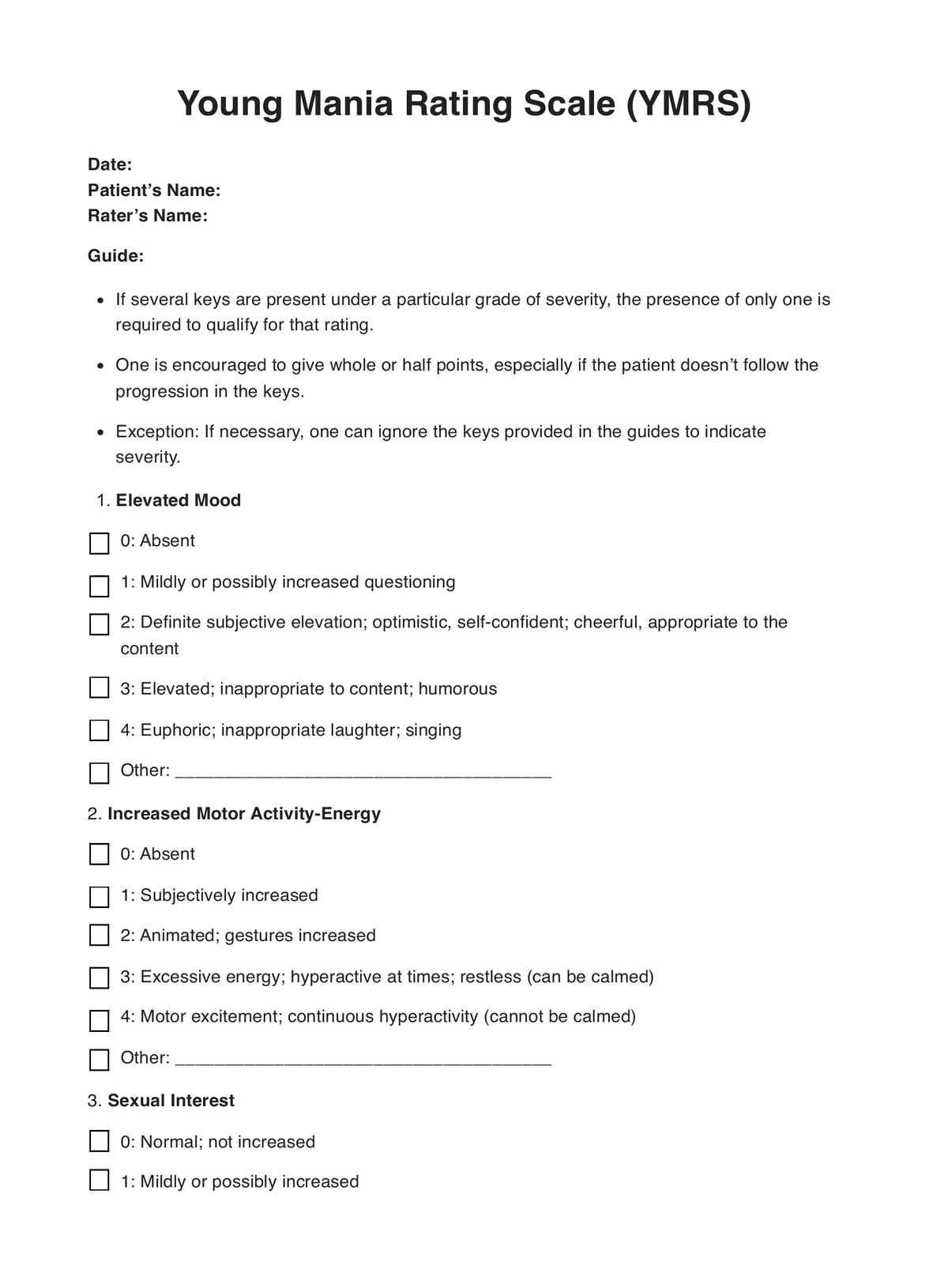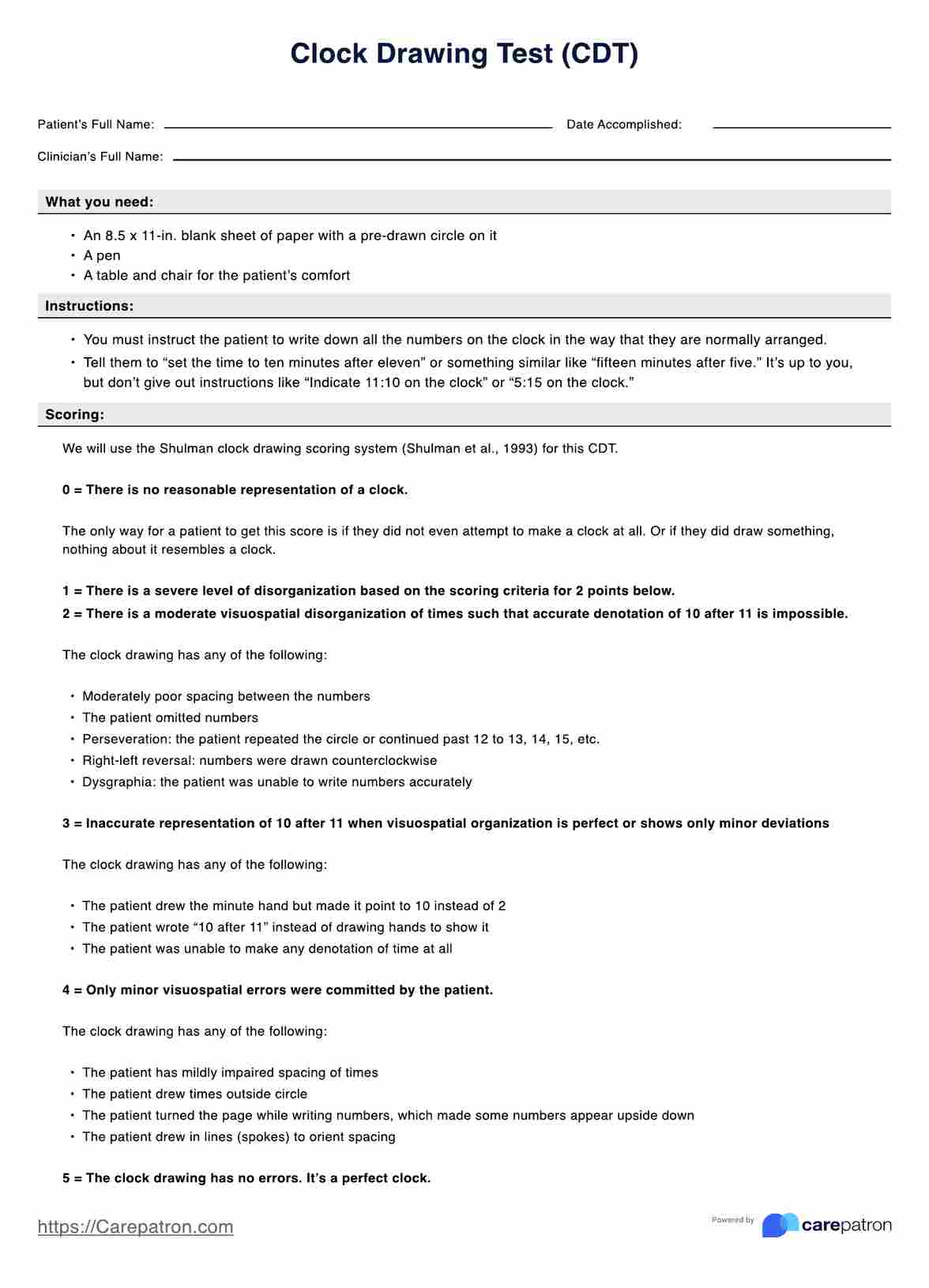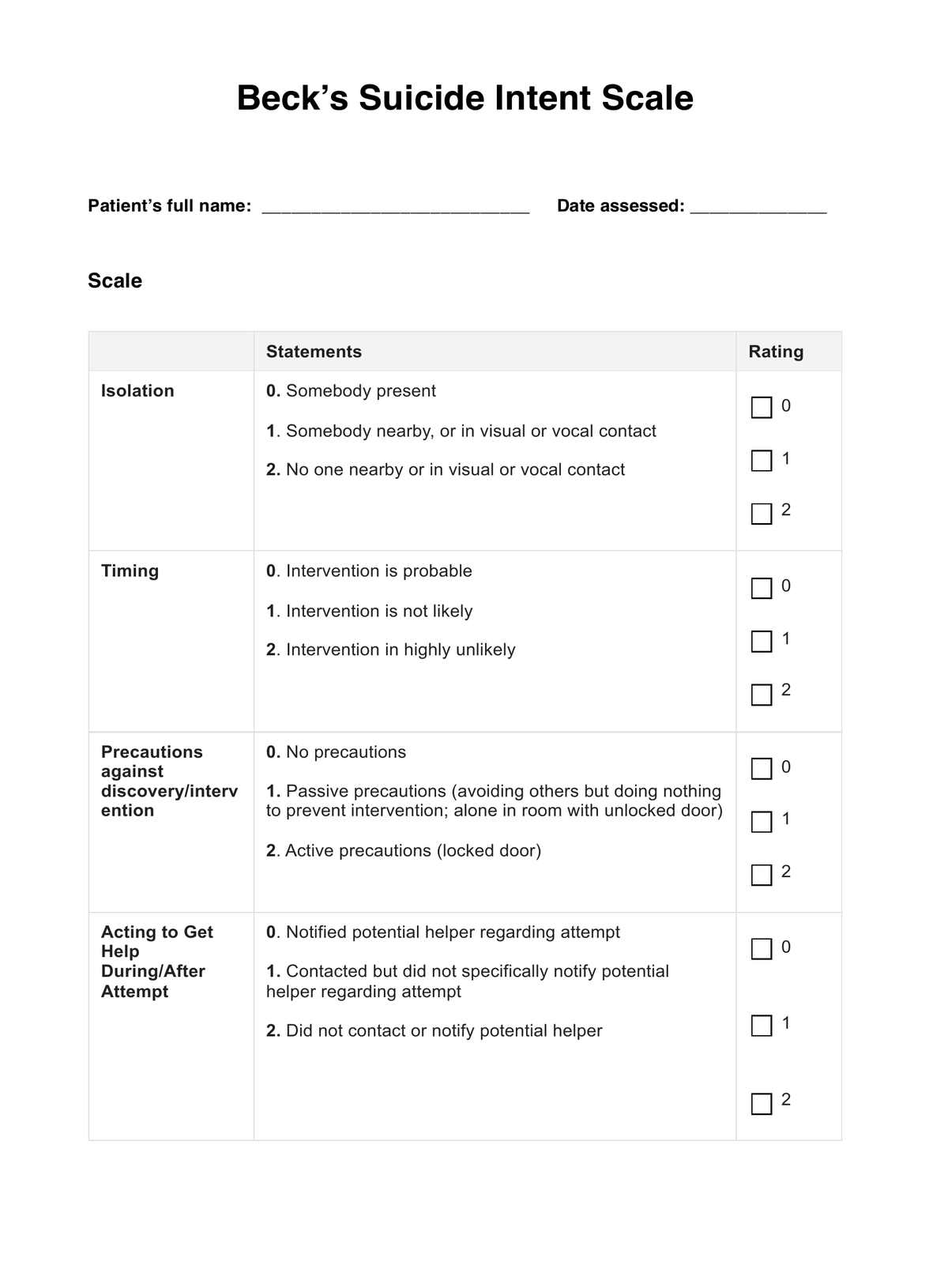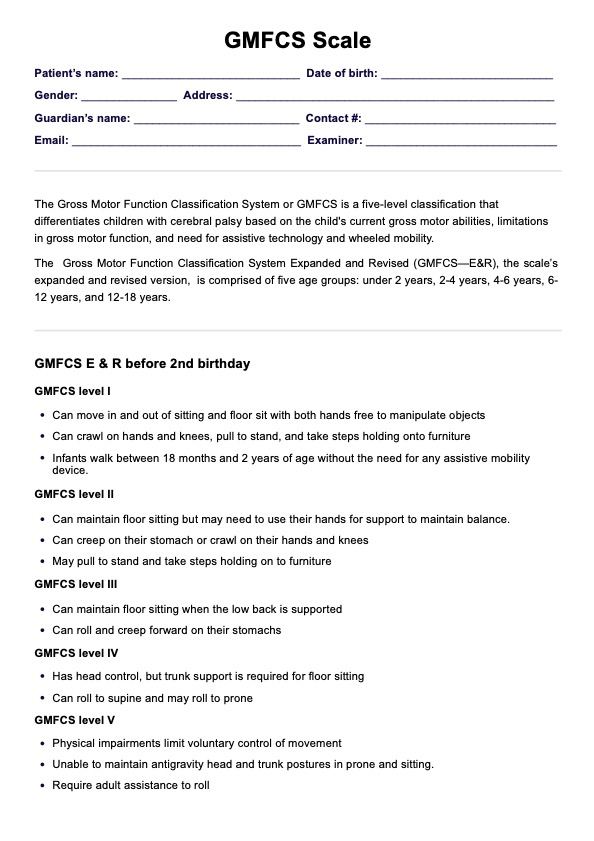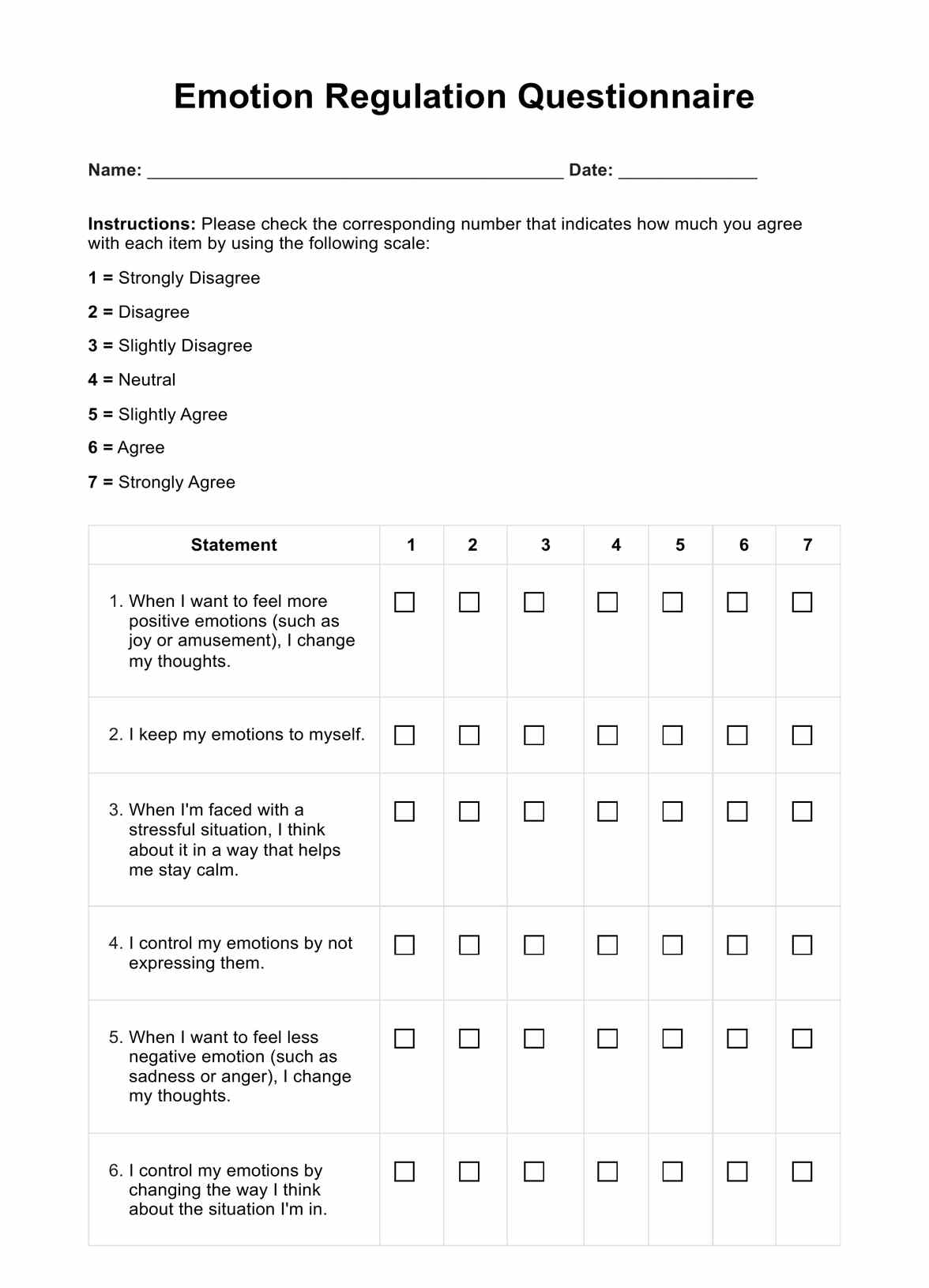Brown Assessment of Beliefs Scale - Adult Version
Assess delusional and nondelusional variants with the Brown Assessment of Beliefs Scale - Adult Version, the trusted tool for mental health professionals.


What are delusions?
Delusions are intricate manifestations of distorted thinking encompassing false beliefs, often impervious to reason or evidence. They are commonly associated with various psychiatric disorders, most notably schizophrenia and certain types of bipolar disorder. Delusions can vary widely in content, but they generally involve misinterpretations of reality and a strong conviction in their accuracy, despite contradicting factual information.
These erroneous beliefs can significantly impact an individual's perception of the world, interactions with others, and overall functioning. Delusions are often categorized on a continuum, ranging from bizarre to non-bizarre. Bizarre delusions involve implausible and unrealistic concepts, such as believing one has been abducted by extraterrestrial beings. On the other hand, non-bizarre delusions involve situations that could occur, though they are still unfounded in reality, such as believing that others are plotting against them.
Delusions can hinder an individual's ability to engage in rational thinking as they resist contrary evidence or logical arguments. This can result in social isolation, impaired decision-making, and difficulty distinguishing between what's real and what's not. Effective treatment often involves a combination of antipsychotic medications, psychotherapy, and support from mental health professionals in order to client's symptom severity.
For electronic health records (EHRs), which play a crucial role in documenting and managing patient information, individuals with delusions may present challenges. Delusional beliefs influence what patients disclose to healthcare providers, impacting the accuracy of their medical history. Accurate and comprehensive EHRs are essential for providing appropriate care. To learn more about the significance of EHRs in managing mental health conditions like , visit Carepatron.
Brown Assessment of Beliefs Scale - Adult Version Template
Brown Assessment of Beliefs Scale - Adult Version Example
How to use the Brown Assessment of Beliefs Scale - Adult Version
The Brown Assessment of Beliefs Scale - Adult Version is a reliable and valid instrument and widely used measure that mental health professionals use to assess and quantify individuals' delusional beliefs' presence and severity. Delusions are a common symptom in conditions like schizophrenia, where individuals hold false, irrational beliefs despite evidence to the contrary. This scale helps clinicians gain a deeper understanding of the nature and intensity of these beliefs, aiding in accurate diagnosis and treatment planning.
Introduction and explanation
Begin by introducing the purpose of the assessment to the individual. Explain that the scale assesses their beliefs and thoughts to tailor their treatment better. Ensure confidentiality to encourage honest responses. This can be done through a structured clinical interview.
Scale familiarization
Provide a brief overview of the scale's format and response options. The scale typically comprises a series of statements related to beliefs, and individuals are asked to rate the extent to which each statement reflects their thoughts using a numerical scale (e.g., from 0 to 4).
Individual response
Have the individual read each statement and rate it according to their experience. Encourage them to respond honestly without overthinking. This can also support the treatment outcome when clients are more involved and open about their cognitions.
Scoring and interpretation
After the individual completes the scale, tally their responses for each statement. Higher scores indicate more intense or severe delusional beliefs. Interpretation should be done by a trained professional, considering the context and overall clinical picture.
Discussion and collaboration
Review the results with the individual. Discuss the beliefs that scored high and explore their impact on daily life. This provides insight into the individual's experience and aids in treatment planning. It is important to recognize that is a possibility that delusionality affects treatment outcome.
Integration into treatment
Incorporate the scale's findings into the treatment plan. Tailor interventions address the identified delusional beliefs through medication, psychotherapy, or a combination of approaches.
Longitudinal tracking
Use the scale regularly to monitor changes in delusional beliefs over time. This helps assess treatment progress and adjust interventions as needed.
When would you use this Brown Assessment of Beliefs Scale - Adult Version?
Here's when and how healthcare professionals can effectively utilize this assessment:
- Diagnosis and differential diagnosis: Mental health professionals can use the scale during diagnostic assessments to gauge the presence and assess symptom severity of delusional beliefs. This aids in differentiating between various psychiatric disorders and ensuring accurate diagnosis.
- Treatment planning: The scale guides treatment planning by providing insights into the nature and intensity of delusional beliefs. Clinicians can tailor interventions to address these specific beliefs through medication, therapy, or other approaches.
- Progress monitoring: Regular assessment using the scale helps track changes in delusional beliefs as well as possible psychiatric disorders over time. This informs clinicians about the effectiveness of interventions and guides adjustments as needed.
- Therapeutic alliance: Incorporating the scale fosters open communication between healthcare professionals and patients. Discussing the results can help build trust and facilitate collaborative treatment decisions.
- Research and clinical studies: Researchers can use the scale to quantify and analyze delusional beliefs in various populations. This contributes to a deeper understanding of these beliefs and their impact.
Relevant healthcare professionals
- Psychiatrists: Use the scale for accurate diagnosis and treatment planning.
- Psychologists: Integrate the scale into therapy sessions to understand and address delusional beliefs.
- Clinical Researchers: Employ the scale to gather empirical data for delusions and mental health studies.
The Brown Assessment of Beliefs Scale - Adult Version is a versatile tool that finds its application in diagnosing, planning treatments, monitoring progress, fostering patient-clinician relationships, and advancing research in delusional beliefs and mental health in clinical practice.
What are the benefits of using this Brown Assessment of Beliefs Scale - Adult Version?
The Brown Assessment of Beliefs Scale - Adult Version offers a structured approach to assessing delusional beliefs in individuals, with several notable benefits supported by research and clinical practice:
Accurate diagnosis and tailored treatment
The scale helps healthcare professionals accurately diagnose the presence and severity of delusional beliefs. This enables personalized treatment plans that target specific beliefs, leading to more effective interventions.
Objective measurement
By providing a standardized framework, the scale offers an objective way to measure and quantify delusional beliefs. This facilitates consistency in assessment across different patients and clinicians.
Monitoring treatment progress
Regular use of the scale allows healthcare professionals to track changes in delusional beliefs over time. This aids in assessing the effectiveness of interventions and making necessary adjustments.
Informed clinical decision-making
The scale's results provide crucial insights into the individual's thoughts and beliefs. This information guides clinicians in making informed decisions about treatment modalities and therapeutic approaches.
Enhancing therapeutic relationships
Integrating the scale into therapy sessions can foster open discussions about delusional beliefs. This strengthens the therapeutic alliance by promoting trust and collaborative treatment planning.
Supporting research and analysis
Researchers can utilize the scale to gather empirical data on delusional beliefs, contributing to a deeper understanding of their nuances and impacts. This can lead to advancements in mental health knowledge and interventions.
Research studies have shown the value of the Brown Assessment of Beliefs Scale in enhancing clinical assessment and treatment. For example, a study by Garety et al. (2001) demonstrated its effectiveness in predicting outcomes for patients with psychosis ("The Peters et al. Delusions Inventory (PDI): Preliminary Reliability and Validity," Social Psychiatry and Psychiatric Epidemiology).
The availability of the free Brown Assessment of Beliefs Scale - Adult Version further promotes its accessibility and utilization, making it a valuable tool for healthcare professionals seeking to evaluate and address delusional beliefs in their patients comprehensively.
Commonly asked questions
The completion time varies, but it generally takes around 15-20 minutes to complete the scale.
Higher scores on the scale indicate more intense or severe delusional beliefs. Interpretation should be done by a trained professional considering the context and the individual's overall clinical picture.
The scale is used during diagnostic assessments, treatment planning, and progress monitoring for individuals with delusional beliefs, particularly in conditions like schizophrenia.
Mental health professionals such as psychiatrists, psychologists, and clinical researchers can use the scale to assess and quantify delusional beliefs in adult individuals.


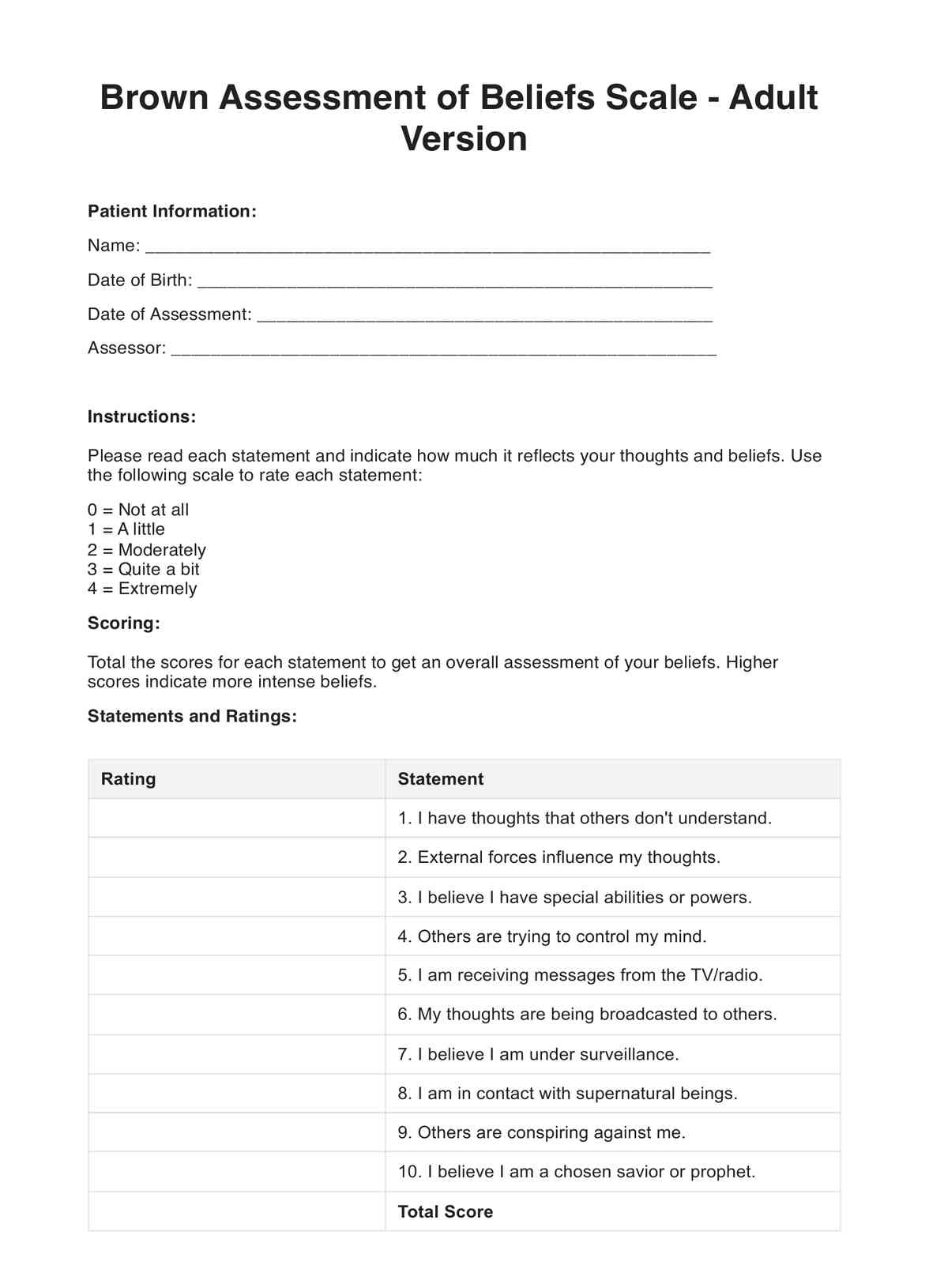
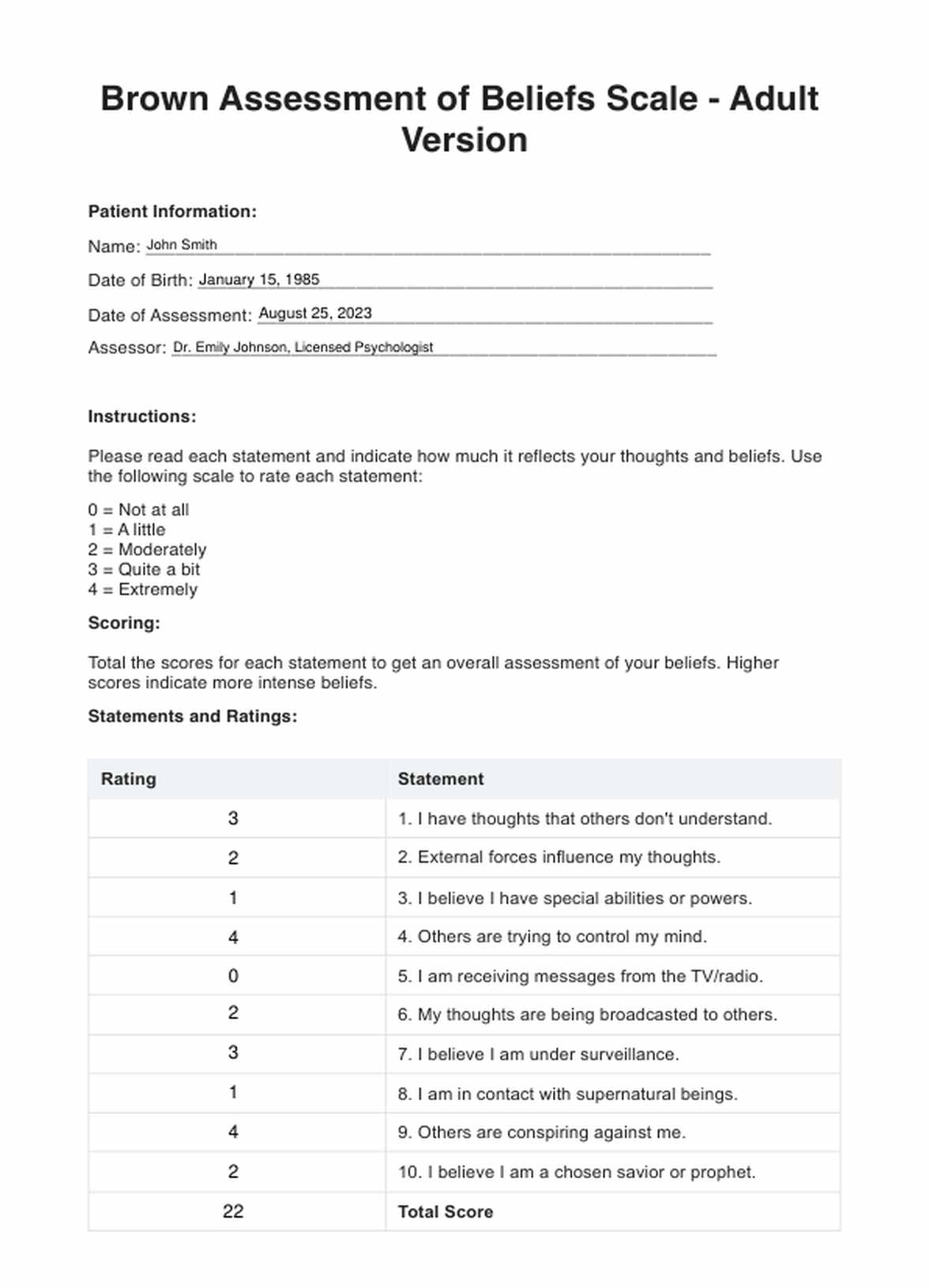

















-template.jpg)



















































































